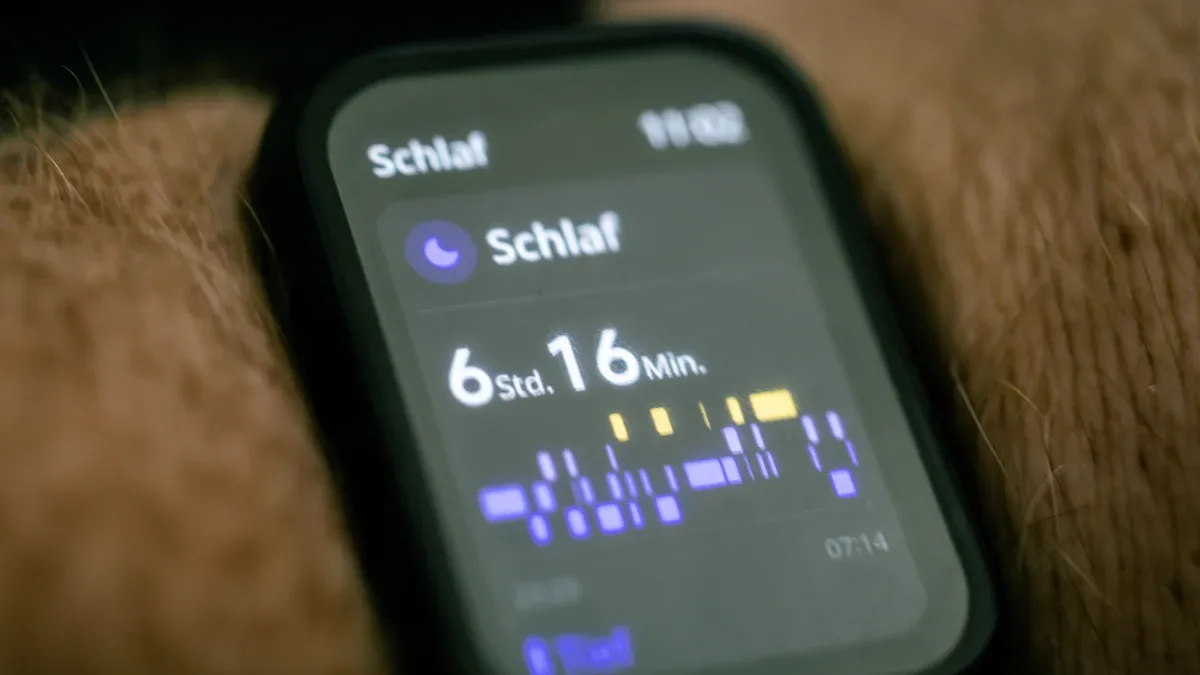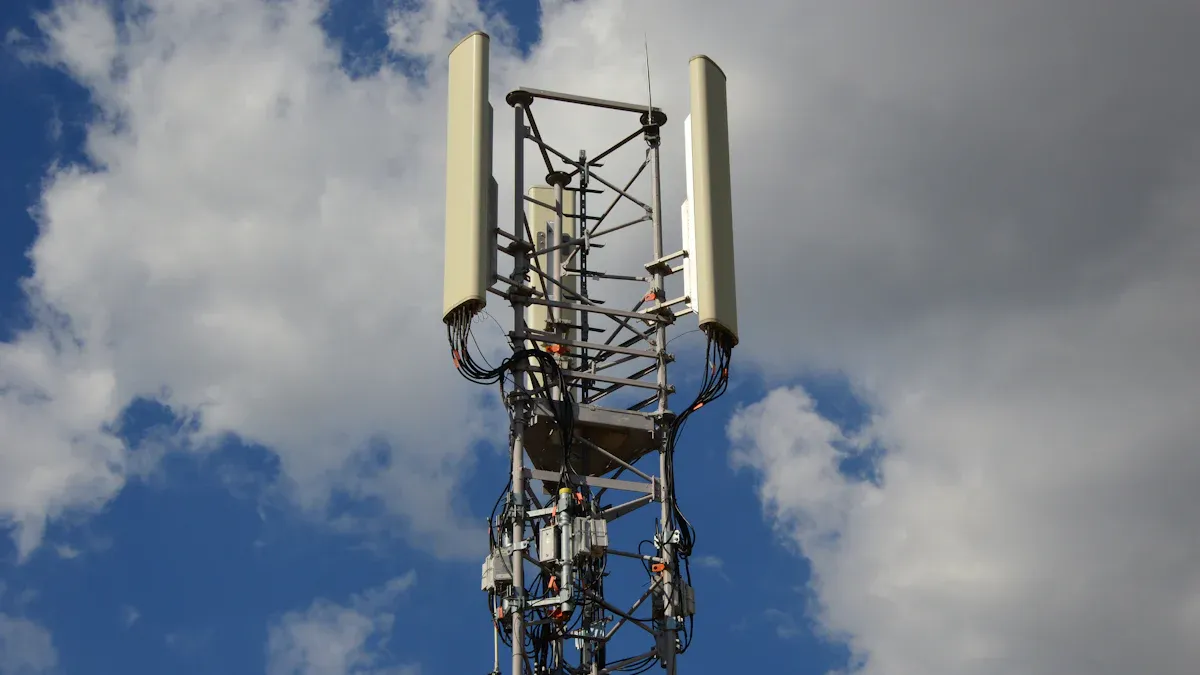Advancements in 5G RedCap Technology for Wearables and IoT Devices

5G RedCap technology is a simpler version of 5G designed specifically for the Internet of Things and wearable gadgets. By streamlining its design, 5G RedCap technology reduces costs and minimizes power consumption. For instance, Huawei reports that 5G NR modules now cost 80% less. Additionally, ABI Research indicates a 65% decrease in material costs for FR1 bands. These advancements enable devices to operate faster and connect more effectively while remaining compact and efficient.
Chinese chip makers play a crucial role in this development. Companies such as Unisoc, MediaTek, and HiSilicon leverage advanced technology to create platforms like V517 and T300. These tools enhance device capabilities and expand the market. They find applications in telemedicine, item tracking, and smart cities. Their contributions are transforming digital economies and enhancing telecommunications.
Key Takeaways
5G RedCap makes IoT and wearable devices simpler and cheaper. It cuts costs by 80% and uses 90% less power. This helps make devices more affordable and useful.
The technology improves connections by working with 4G networks. Devices can stay connected in more places, making them better for users.
5G RedCap allows smaller and lighter wearables to be made. These devices are easier to build and last longer on a charge. This is important for smartwatches and AR glasses.
Chinese chip makers are improving 5G RedCap with better chips. These chips boost performance and save energy, helping smart cities and industrial IoT grow.
Future updates to 5G RedCap will make devices even smarter. They will also improve connections in many areas.
Key Features of 5G RedCap Technology

Spectrum Efficiency and Frequency Range
5G RedCap improves how devices use frequencies. It helps IoT and wearables work better. It can share spectrum with 4G networks, making connections smoother. This means devices can stay connected in more places.
RedCap uses FR2 frequencies, opening new options for IoT.
It supports up to 20 MHz in FR1 and 100 MHz in FR2.
Devices need fewer antennas, like 2x2 MIMO for download and SISO for upload.
These upgrades help gadgets like Qualcomm X35 smartwatches and AR glasses connect better while staying small.
Cost and Power Consumption Benefits
5G RedCap lowers costs and saves energy, perfect for IoT. Hardware costs for 5G NR modules are 80% less than older 5G modules. Material costs for FR1 bands are also 65% lower.
It also uses less power. Features like eDRX and PSM save up to 90% energy. MediaTek's T300 platform allows devices to last longer, great for farm sensors and tracking tags. These features make IoT devices cheaper and longer-lasting.
Lightweight Design for IoT and Wearables
5G RedCap devices are smaller and simpler. This is great for wearables and IoT gadgets that need to be portable. Key benefits include easier designs, lower costs, and longer battery life.
Benchmark/Metric | Description |
|---|---|
Easier Designs | Fewer antennas make devices simpler to build. |
Lower Costs | Simpler designs mean cheaper production. |
Longer Battery Life | Better power use means devices last longer. |
Faster Testing | Simple designs make testing and setup quicker. |
Future updates like R18 eRedCap will improve efficiency even more. HiSilicon's V7R10 platform boosts coverage and security, ideal for smart cities and energy IoT.
Applications of 5G RedCap Technology in Wearables and IoT

Wearable Devices
Smartwatches with better mobility, connection, and independence
5G RedCap has improved smartwatches by boosting their mobility and connection. Platforms like Qualcomm X35 use less power and are smaller. This makes smartwatches work better and more independently. Users can stay connected without needing a smartphone. For example, health data can now be sent instantly. This helps with fitness tracking and medical checks. These changes meet the growing need for connected devices in health and fitness.
AR/VR glasses for better experiences and lighter designs
AR/VR glasses have also improved with 5G RedCap. They are lighter and connect better, giving users amazing experiences. Chips like Unisoc V517 add AI features and backup systems. These make sure the glasses work well, even in tough conditions. Now, AR/VR glasses are more useful for gaming, learning, and remote jobs.
Industrial IoT Applications
Sensors for smart grids and maintenance
Industrial IoT uses sensors for smart grids and fixing problems early. 5G RedCap makes these sensors more reliable and faster. MediaTek's T300 platform helps sensors save energy and last longer. For example, farm sensors and tracking tags now work better. In factories, 5G RedCap helps share data quickly. A German car factory used it to work faster and avoid delays.
Aspect | Description |
|---|---|
Better Reliability | Works well in tough industrial places. |
Faster Response | Helps with real-time monitoring and control. |
Saves Power | Uses less energy for longer use. |
Lower Costs | Makes devices cheaper to use widely. |
Cameras and small IoT gadgets
Cameras and small IoT gadgets are better with 5G RedCap. HiSilicon V7R10 offers strong security and wide coverage. This is great for smart cities. These devices now use less energy and can be used in big projects. Examples include city security and energy-saving systems.
Entry-Level Smartphones
Cheaper connection for more users
5G RedCap has made smartphones cheaper to connect. Platforms like ASR 595X combine Beidou and 5G features. These phones work well for simple tasks like health wearables and wireless sensors. This makes smartphones affordable for more people.
RedCap technology for better performance
Entry-level smartphones now use 5G RedCap for better energy use and reliability. These phones can handle IoT tasks while saving power. For example, rural doctors in the U.S. use these phones for telemedicine. They can now do video calls and help patients in real time.
Contributions of Chinese Chip Makers to the 5G RF Chip Market
China's Role in IoT Growth
China is now a leader in the IoT chip market. It is helping 5G RedCap technology grow quickly. By late 2024, China Mobile plans to set up 500,000 5G RedCap base stations. These will cover all county areas using the 700MHz FDD band. China Telecom and China Unicom have built over 200,000 RedCap 5G base stations together. These efforts improve connections and expand IoT use.
The Ministry of Industry and Information Technology (MIIT) supports this growth. Its 2024 plan aims for 3.6 billion IoT connections by 2027. About 95% of these will use 4G and 5G networks. This support helps create affordable and energy-saving devices for consumers.
Aojie Technology's 5G RedCap Innovations
Aojie Technology has made big advances with its ASR8603 chip. This chip combines a CPU, GPU, NPU, GNSS, and RedCap modem into one system. It follows the 3GPP R17 standard and works with NR SA/LTE Cat.4 networks. This makes it great for IoT gadgets.
The chip has a quad-core processor and supports FHD+ screens with 120Hz refresh rates. It also uses AI to reduce noise and has low-power features. These make it perfect for smart tools like trackers and telemedicine devices. Aojie Technology shows how Chinese companies are shaping the 5G RF chip market.
Feature | Specification |
|---|---|
Processor Architecture | Quad-core (1x A76 1.7GHz + 3x A55 1.5GHz) |
Network Support | NR SA/LTE Cat.4 dual-mode |
Low-Power Features | Low-power Sensor Hub, AI noise reduction |
Wireless Connectivity | Built-in GNSS, external WiFi6 + BT5.4 |
5G Capabilities | Network slicing, 5G LAN, URLLC |
Saving Power and Using AI
Chinese chip makers focus on saving energy in 5G RedCap chips. Features like eDRX, PSM, and DVFS help save up to 90% power compared to older 5G modules. For example, MediaTek's T300 platform allows devices to last longer. This is useful for farm sensors and tracking tags.
AI makes devices smarter and better. Unisoc's V517 chip uses AI and dual-mode backup for reliable work. It is great for industrial sensors and security cameras. HiSilicon's V7R10 chip adds strong security and wide coverage. This works well for smart cities and energy IoT. These improvements show how power-saving and AI help grow the 5G RF chip market.

5G RedCap technology has changed wearables and IoT devices. It solves problems like high costs, power use, and weak connections. Sharing spectrum has made setup cheaper. Features like eDRX and PSM help batteries last longer. Real-time communication makes telemedicine and industrial IoT work better.
Chinese chip makers, such as Qualcomm, Unisoc, MediaTek, and HiSilicon, lead this progress. Their chips, like Qualcomm X35 and Unisoc V517, use less power and include AI. These chips improve smartwatches, AR glasses, and factory sensors. They also open doors for smart cities and tracking tools.
The future of 5G RedCap is bright. It will grow IoT use in Asia and other places. This will help create smarter cities and industries everywhere.
What is 5G RedCap technology, and how is it different from regular 5G?
5G RedCap is a simpler type of 5G made for IoT and wearables. It costs less, uses less power, and is less complex. Unlike regular 5G, it needs fewer antennas and smaller bandwidths. This makes it perfect for small devices like smartwatches and AR glasses.
How does 5G RedCap help IoT devices save power?
5G RedCap has features like eDRX and PSM to save energy. For example, MediaTek T300 helps devices last longer without charging. This is great for farm sensors and tracking tags. These features keep devices connected while using less power.
What do Chinese chip makers do in the 5G RF chip market?
Chinese companies like HiSilicon, Unisoc, and Aojie Technology lead in 5G chip-making. They create advanced chips like HiSilicon V7R10 and ASR 595X. These chips use AI, have backup systems, and are very secure. Their work helps smart cities and industrial IoT grow.
Can 5G RedCap be used for industrial jobs?
Yes, 5G RedCap works well for industrial IoT tasks. Chips like Unisoc V517 and MediaTek T300 make sensors and cameras more reliable. They also save energy and allow real-time monitoring. This helps factories work better and fix problems early.
How does 5G RedCap improve wearable gadgets?
5G RedCap makes wearables smaller and more efficient. For example, Qualcomm X35 uses very little power and is tiny. This is great for smartwatches and AR glasses. These upgrades give users better connections and more freedom.
See Also
AD9736BBCZ: Pioneering the Next Generation of Wireless Tech
Exploring How Innovative Technology Drives Electronics Quality Forward
Discovering MAX8647ETE+T's Impact on Smartphone Visuals
CALL US DIRECTLY
(+86)755-82724686
RM2508,BlockA,JiaheHuaqiangBuilding,ShenNanMiddleRd,Futian District,Shenzhen,518031,CN
www.keepboomingtech.com sales@keepboomingtech.com
